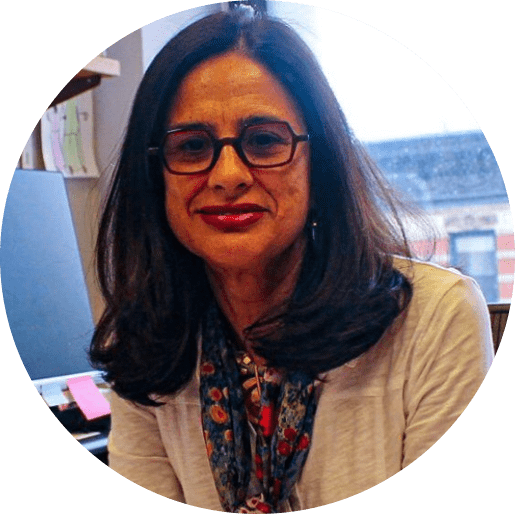Tell your story. Learn from others.
What is it like to teach and learn at Columbia in 2020-2021? Read, watch, and listen to stories from Columbia voices below, and share your own voice.
Faculty, postdocs, staff, graduate students, and undergraduate students are invited to submit their reflections—through video, audio, or text—on hybrid/HyFlex or fully online teaching, curricular innovations, or learning experiences at Columbia during the pandemic.

Vicky Murillo
Professor of Political Science and International and Public Affairs
Professor Murillo shares how she utilized CTL offerings to strategize how to 1) establish a relationship with students remotely, 2) engage students in different time zones, 3) divide her course into modules that allowed her to fulfill the 3 goals of the class, and 4) gather feedback from students for her lecture class Latin American Politics: Inequalities, Democracy, and the Rule of the Law.

Weiping Wu
Professor of Architecture, Planning and Preservation; Provost’s Senior Faculty Teaching Scholar
Dr. Weiping Wu discusses how she used Perusall, a collaborative reading and learning platform, in her graduate seminar Chinese Urbanism in Global Context during the Fall 2020 semester. This allowed her to engage students—including many international students—while teaching online.

Costis Maglaras
Dean and David and Lyn Silfen Professor of Business, Columbia Business School
Professor Maglaras facilitated eight lectures to the incoming cohort of MBA students in a HyFlex modality during the Fall 2020 semester. In a video, he shares his experience and perspective of teaching in this modality.

Janice Cutler
Professor of Clinical Psychiatry at CUIMC; Provost’s Senior Faculty Teaching Scholar
Catherine Parker, student at Vagelos College of Physicians and Surgeons
In a video, Dr. Janis Cutler and student Catherine Parker share their experience pivoting the course Introduction to Psychiatry to an online format in Spring 2020. They discuss how they partnered to foster student engagement and learning, which included inviting senior medical students to participate in the education of their junior colleagues.